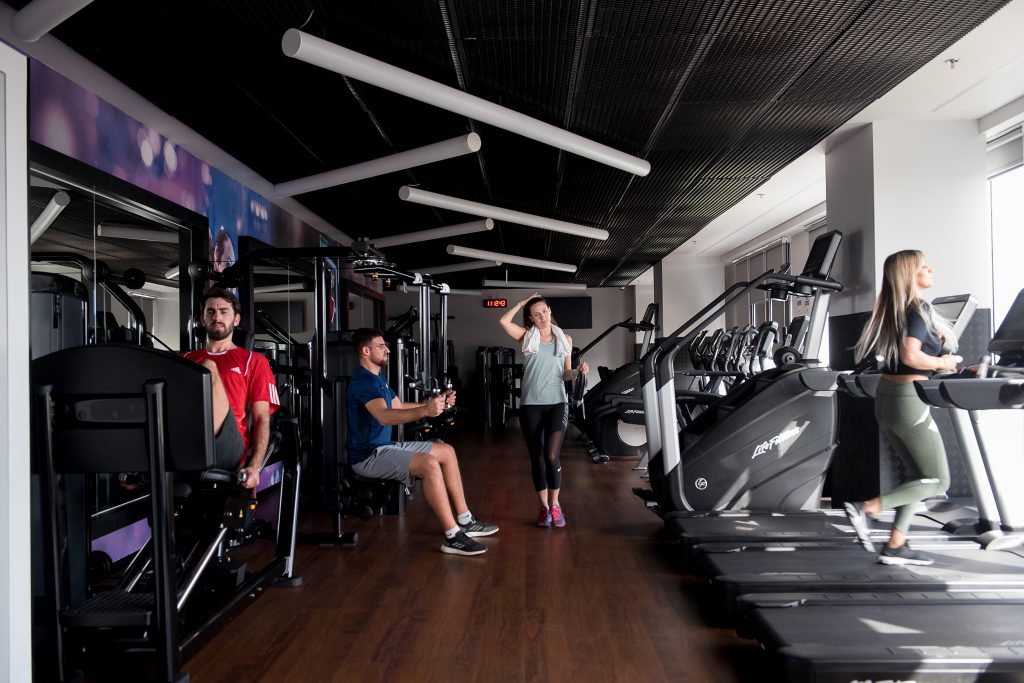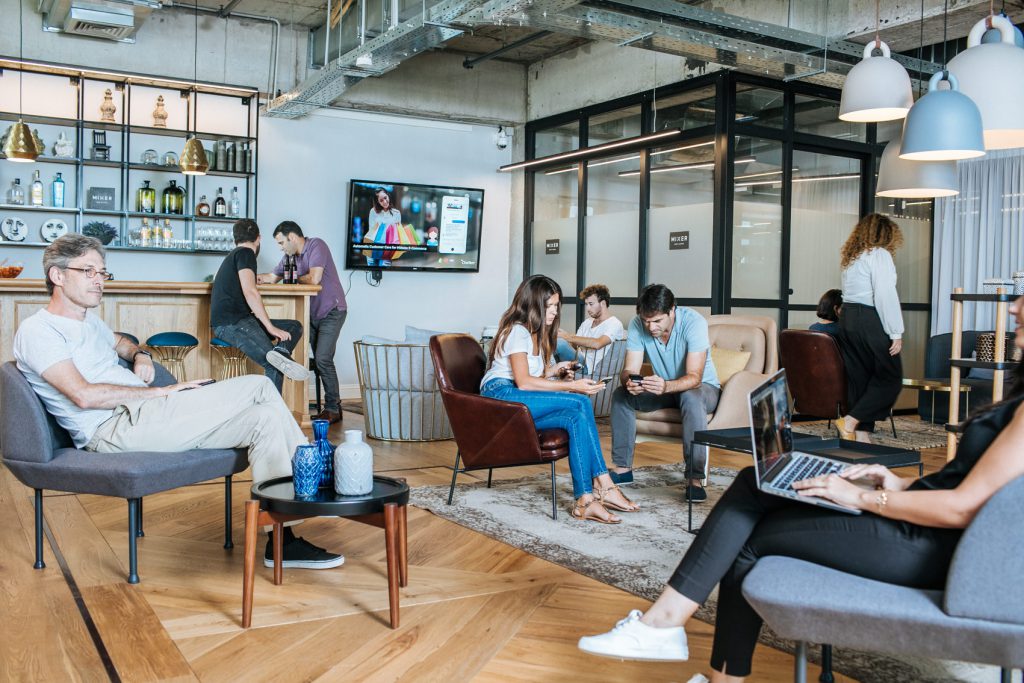7 tips for effective meetings
One of the most significant changes in the world of work in recent years has been the appearance of coworking spaces as the alternative to the classic office.
The many benefits of this trend for optimal work management have been discussed elsewhere, but we would be remiss not to mention one of the biggest barriers to coworking efficiency, namely the time spent on meetings.
Think about it: how much time do workers spend on preparing for meetings, attending these meetings, doodling in meetings and, afterward, grumbling about meetings.
The question remains: since it is obvious that businesses cannot forgo meetings, how can you make your meetings more effective?
1. Ask yourself “Why am I having this meeting?”
The worst reason for a meeting is “because we’ve always had meetings”. It’s important to check whether this meeting is necessary and useful, what is the purpose of this specific meeting, etc.
Your employees will appreciate much more a canceled meeting than a superfluous one.
2. A work meeting is not a party – you don’t have to invite everyone.
Meetings should be productive, otherwise there is a general feeling of frustration and a waste of time; this can dent your employees’ motivation.
You should be careful to invite only the persons who can effectively contribute to the objectives of the meeting, and if any essential person cannot make it, consider postponing the meeting. Otherwise, you might have to do the same meeting all over again.
3. Announce beforehand the type of the specific meeting.
An update meeting is not the same as a brainstorming meeting. And a decision-making meeting is something else again. Being clear about the type and the objective of the meeting will help you decide whom to invite on one hand, and on the other hand – keep the meeting shorter and to the point.
4. Consider including an agenda in the invitation to the meeting.
This will help people to prepare for the meeting and will contribute even further towards its effectiveness.
5. Take notes effectively.
It is not a good idea to let everyone take notes at a meeting because everyone hears things differently (or hear different things), and it may cause confusion. Instead, try taking notes using a collaborative platform, so that everybody is on the same page, and everyone can see what has gone on before.
This will be of the utmost importance in multinational businesses with employees with different languages.
6. Be punctual.
Obviously, there are always reasons why the meeting didn’t start on time. The problem with starting late is twofold:
I. It might affect adversely the schedule of everyone involved in the meeting, like a “domino effect”, that can also lead to reduced productivity.
II. It might give the impression that you don’t consider other people’s time as valuable as yours. This could affect motivation.
Being punctual means also ending the meeting on time. Meetings that drag on too long are self-defeating.
7. Always end a meeting with an action plan.
If you want your meeting to be productive, allow a few minutes at the end for a discussion of the next steps, a list of actionable items with names and deadlines.
After the meeting, it may be useful to carry out a follow-up survey, in order to assess its impact.
Meeting rooms and conference rooms in coworking spaces, like MIXER, offer a compelling advantage to your business not only by providing flexible options for any type of meeting but also by prompting you to book a room for a specific time range and size. This will help you to be efficient in defining the framework of the designated meeting.

What to look for in a coworking space?
Many people believe that coworking spaces represent the future of work in the 21st century. This trend has been growing steadily and rapidly, and today there are more opportunities to share a working space with other companies or freelancers.
So even if you have only now decided to join the coworking trend, it’s not too late; there are plenty of possibilities – you just need to decide what’s best for you and your business.
Here are 8 things to look for in a coworking space:
1. Location
Some neighborhoods are more inviting than others. A coworking space which is located in a good neighborhood has a very good impact on your brand and reputation and is essential for attracting both customers and workers.
The neighborhood will also affect the lifestyle you wish to provide for your employees, which is part of the general atmosphere of your business. Your workers could use, for example, nearby parks, gyms, malls, cafes, restaurants etc.

2. Accessibility
Transportation is a crucial issue, especially in our modern, traffic-congested cities. A coworking space should be within easy reach of public transport, and/or offer convenient parking places. This is true for employees as well as clients and visitors.
3. Atmosphere
The atmosphere in a coworking space is considered by many to be the most important issue; people spend many hours in there, so every effort must be made to make them feel this is a “home away from home”.
Today’s coworking world can offer something to every kind of business, whether freelance or corporate-based. You just have to decide where you fit best.
So look at who is already working at the specific space before you commit, check the “vibe” to see if it corresponds to your idea of the ideal environment.

4. IT support
Coworking spaces can offer much more than just wi-fi. The IT support may include private network for every client business, access management, cybersecurity, etc. Some can offer shared devices management (printers, plotters, projectors, etc.).
5. Amenities
Amenities are an important component of any coworking space’s quality. These are much more than just perks. They contribute to the general atmosphere of the place, and can help to reduce costs (through sharing overhead costs) and increase productivity (by reducing the time workers spend outside the facility).
Coworking spaces differ in the kinds of amenities they offer. They range from kitchen facilities with free tea & coffee, through bike racks and bathrooms with showers and gym rooms, to nap pods and even prayer rooms. Some provide shared administrative services such as reception, phone answering, mail management, etc.
6. Meeting rooms
Staff meetings and meetings with clients are a big part of the business. Coworking places offer meeting rooms so you don’t have to go outside to meet with clients, conduct job interviews and other activities. Be sure to verify that the meeting rooms are big enough, secure and soundproofed, and that their availability meets your needs.

7. Networking
This is a big part of the appeal of the coworking space movement. So you could check to see whether there are in-house events (such as courses, seminars and classes), where like-minded people can meet and mingle.
8. Community
Last but not least. The sense of community is one of the main benefits of coworking space; it pervades all other aspects, and all the things we have enumerated above can contribute towards a sense of community.
A community is not only a social force; it is also a production booster. It makes people want to go to work, makes them more involved, and encourages them to learn from their peers.
You will probably find out that some coworking places offer additional services, so be practical. See also what does a membership include, and remember – the rule of thumb says that, in the long run, a long lease is cheaper than a short one that you renew periodically.

Time Management Tips
“Time is the most valuable resource” and “time is money” are two of the famous sayings used to describe the importance of time management in the business environment. Yet, and despite the abundance of time management apps and tools, many workers still feel that they are running out of time. So, how can you manage time instead of letting it manage you? Here are some time management tips to help you manage your schedule effectively.
1. Set Monthly, Weekly and Daily Schedule
At the beginning of each month (or better: at the end of each passing month) write down all the tasks, goals, events, meetings and plans for the upcoming month, including everything that was delayed from the previous month. You can use a digital calendar, a notebook or even sticky notes – whatever works for you.

The next step, prioritize those tasks, organize them on a weekly level and try to give a reasonable time limit to each task. In your weekly plan, also consider personal commitments as well as routine tasks such as filing, checking emails, etc.
Open each day by reviewing your daily schedule and close it by checking completed tasks and rescheduling unfinished ones. That way, you can be sure that nothing is forgotten and left behind.
2. Mind your Productivity Curve
Different people may be productive at different times of the day. Some people reach their productivity peak in the early hours of the morning, while others wake up fully only after lunch. Know what your peak hours are and adjust your daily schedule accordingly. For example, if your peak hours are in the morning, set the most important tasks for these hours and delay the routine, technical tasks to the afternoon, and vice versa.
3. Don’t multi-task
For most people and most tasks, multi-tasking, i.e. trying to do more than one thing at the same time, leads to incomplete performance on each task. Therefore, it is usually recommended to focus on each task and each project at a time. However, if you’ve gathered a list of similar tasks (such as answering emails or preparing quotes for prospective clients), it will be wiser to complete them one after another.

4. Avoid Procrastination
Procrastination is the number one enemy of workers. Naturally, we tend to delay unpleasant tasks, such as dealing with bureaucratic organizations or firing flawed employees. However, these tasks do not become more pleasant as we delay them, but the other way around. Therefore, you should disconnect the emotional part from the task and simply get it over with.
5. Leave some “Me Time”
If you want to continue enjoying your work and to stay inspired and open for new ideas, don’t tie yourself to your office chair and computer. Leave some time off for recreational activities, even during the workday. Meet your colleagues for a long lunch, take a walk outside the office or take a break at the gym. You’ll find that these breaks help your productivity and creativity.

Sport and Fitness in the Workplace
There are not many situations in life that we can label outright “win-win” situations; chief among those is the matter of the benefits of sports and fitness activities in the workplace.
In today’s culture, while the importance of exercise is universally recognized. Yet, we never have enough time. “I don’t have time” is the most common excuse for skipping the gym; so many commitment – family, work, social life, and so on – clutter our days, that finding time for exercising becomes more and more challenging.
One of the ways that employers could help their employees find time to exercise (and for the benefit of both) is by introducing exercising in the workplace.
What are the health and cognitive benefits of exercise in the workplace?
Benefits for employees:
Exercise combats stress – this is one of the immediate benefits of exercising. Stress at work takes a huge toll on employees in terms of poor health, reduced creativity, depression etc. Exercising leads to an immediate boost in the levels of several important neurotransmitters, like serotonin, noradrenalin, dopamine and endorphins, which can be depleted by anxiety and depression. Even spending 30 minutes exercising in the gym is enough to improve the mood and eliminate negative feelings.
Exercise enhances the ability to focus – after getting the blood flowing, following an exercise, whether running, walking, gym workout etc., there’s a heightened sensation of focus. It is safe to say that a short workout before an important meeting can work miracles when your attention needs to be at its peak.
Exercise improves long-term memory – Neuroscience research has shown that exercise has a positive effect on the hippocampus (The hippocampus is responsible, among others, for long-term memory and navigation). Exercise encourages the growth of hippocampus cells, thus reinforcing long-term memory.
Exercising promotes networking and teamwork – Team spirit and camaraderie are important benefits of any workplace fitness program. Employees exercising together get to know each other, and those relationships develop into all kinds of benefits, like:
Social support – which can contribute in its turn to further stress reduction.
Problem solving – through conversation during the workout, when the mind is free to wander, thus promoting creativity.

Benefits for employers:
Exercising reduces absenteeism – obviously, healthier worker does not have to take days off to see the doctor, thus increasing productivity. Moreover, employers who created employee fitness areas reported that lost workdays declined by a whopping 80%(!).
Exercising reduces health costs – it stands to reason that healthy employees cost less than unhealthy employees. Healthcare experts estimate that 70% to 90% of national healthcare expenditure is due to unhealthy lifestyle circumstances, like sitting all day long on a chair in front of a screen; these conditions might cause chronic diseases. According to US estimates, these problems cost American businesses close to a trillion dollars a year! So, any investment by an employer in the fitness of his workers is worth the cost.
Exercising reduces employee turnover – current research shows that companies that have fitness programs retain employees longer that companies that don’t.
The importance of exercising in the workplace cannot be overstated. Most experts agree that one hour’s exercise should be considered as important as a work meeting. Some of them recommend inserting it in the calendar, just like a regular appointment, and considering it essential and “sacred”.
The benefits of exercising in the workplace have not escaped the watchful eyes of companies and corporations. That is why more and more companies invest in gyms in the workplace; it is not considered just a “perk” for employees anymore. Just recently MIXER Work & lounge opened a fully equipped gym in the MIXER Herzliya building and is offering a free first year for Mixer members. That way, you’ll have one excuse less to avoid hitting the gym.

Who Should Work in Coworking Spaces?
The coworking space craze has taken the working world by storm, and companies that lease coworking spaces are among the fastest growing in the real estate field.
A big part of the appeal of the coworking space is due to its inherent versatility and flexibility, and it is safe to say that its popularity goes hand in glove with the growing prevalence of the gig economy.
But while it is almost self-evident that coworking spaces are ideal for freelancers of the gig economy due to its temporary, flexible and digital character, they are much more than just “a coffee shop with motivation” for freelancers; there are other kinds of workers who can benefit from choosing to work in coworking spaces.
What do working spaces offer?
Coworking spaces come in many shapes and flavors; it is recommended to shop around to find which is more suited to your budget and your needs. Some may offer just a desk and wifi, but some may offer facilities like a common area, private suites, dedicated desks / hot desks, meeting rooms, an event space, etc. There are even some where there will be a podcast / photo studio.
Who could work in coworking spaces?
Startup businesses are frequent users of coworking spaces.
A startup is already a small business; not just a solo venture. So there is a real need for a dedicated space for coming together to work, meet, discuss, etc. Moreover, as the startup grows and expands, there is a greater need for office space as well as for (general and specialized) equipment and amenities required in a professional setting.Another benefit for startups is the flexibility as a response to business fluctuations. Startups are notoriously unstable, and they run often on a tight budget; coworking spaces are perfect for these situations because there is no need to commit to a long-term lease, and the arrangement are definitely cheaper.Yet another benefit for startups is the virtual office. As a small business it is necessary to have a physical business address. In addition to having a mailing address and mail handling services, there are (temporary) meeting lounges it is possible to host potential investors, without renting an entire office suite.

Artists and creatives could make great use of coworking spaces:
For artists as diverse as writers, photographers, visual artists, jewellery and object designers, painters, composers, textile designers etc., coworking spaces can provide a community for cross-fertilization of the imagination, in addition to mutual support, guidance and mentorship as well as creative spaces for brainstorming. Moreover, coworking spaces may offer tools that may be too expensive to purchase for oneself – like high-end workstations, printers and plotters, etc. Some companies offer exhibition space available for rent, which is a big bonus for young artists.

Manufacturers, engineers, inventors and other participants in the 3rd industrial revolution:
The 3rd industrial revolution is currently best symbolized by the advent of the 3d printer. Just imagine: designers and engineers team up in order to create a car part, then they click “print” and somewhere a 3d printer starts producing the part. There’s no ink; instead, the printer uses materials like plastic, nylon, epoxy resins, silver, titanium, steel, wax, polycarbonate, etc.
Coworking spaces (sometimes called makerspace in this context) can help here in several ways:
- Provide 3d printers on site for experimentation, as well as a variety of additional tools;
- Reduce the costs of purchasing printers and raw materials;
- Create a creative community for the various disciplines required to create and manufacture 3d objects.

Any business who appreciates flexibility, values social-professional interaction with a
community of like-minded people, is looking for networking opportunities in order to gain
new perspectives (as well as new clients), will benefit from working in
coworking spaces.
The Benefits of Coworking Spaces
The rise of the internet has brought in its wake a fundamental paradigm shift, on a never-see-before scale, in every imaginable aspect of our life in general, and in the way we work in particular. We are still trying to come to terms with the changes it made and with the possibilities it implies.
One of the most recent (and talked-about) changes in work culture is the soaring popularity of coworking spaces. The concept is ingeniously simple, offering many benefits. Here are some of the benefits of coworking spaces for employees and organizations alike.
1. Productivity
- Coworking space means being surrounded by hard working professionals. This atmosphere is very conducive to boost motivation.
- Coworking spaces are optimal for increased productivity through the reduction of the administrative tasks that take many resources when operating in traditional offices, and allowing companies to focus on their projects.
- Coworking spaces are usually situated in central locations. This makes the workspace accessible and very convenient for work or meetings.
- Coworking spaces are less stuffy than “legacy” offices, but without the danger of temptations when working from home (where the fridge, the bed and the TV are very close).
2. Networking
People who work from homes, or freelancers who work in coffee shops, often report that they’re missing out on the chance of meeting and interacting with like-minded colleagues. And by that, they risk missing opportunities for collaboration and growth. Coworking spaces typically host several companies of various sizes, thus offering the possibility of interacting as well as having informal discussions with other people with different skills, from different backgrounds. This can lead to new business opportunities.

3. Flexibility
Freelancers and small businesses can’t always provide the funds necessary for long-term leases. The coworking work culture comes with numerous membership options, which let every business select what works best for it. There are monthly, daily and even hourly plans. Every member can set his or her own schedule and work whenever they prefer.
4. Scalability
While the “traditional” office requires a long-term lease with little or no flexibility, a coworking space provides the ability to easily scale the working teams up or down, in accordance with the business fluctuation – just procure additional seats in a location that already provides all the necessary infrastructure.

5. Cost-effectiveness:
Setting up an office is a big investment, and it is a heavy burden to put upon the shoulders of young startups or new businesses. Coworking space is the best way to have an office with minimum expenditure. Forget the headache of dealing with utility bills, repairs, service providers, etc.; the coworking space provider will take care of all that and you can invest more time and resources in developing your business.
6. Promoting wellbeing:
It is a self-evident truth that a healthy and happy worker is more productive. Coworking spaces provide an environment for keeping a healthy work-life balance. On one hand, there is a separation between home and work; on the other hand, coworking companies offer many amenities for bolstering wellbeing. These may include Yoga classes, on-site gyms (with personal trainers), reading rooms, and even meditation pods.

7. Budget Stability:
Any small business or young startup, which operate usually on a tight budget, would find it extremely helpful for their day-to-day operations, as well as for their business plans, to have predictable expenses, overhead, etc. In a coworking space everything is included – from printer ink to coffee filters, not to mention high-speed internet and other utilities.
Coworking spaces have come a long way since their inception, and they show little sign of slowing down. The latest estimates are that by 2020 we will see more than 26,000 coworking spaces around the world, with enough scope for further development.
Wellbeing in the Workplace
The employees’ wellbeing has become a huge focus for many of today’s leading companies. From on-site yoga classes to fresh roasted coffee, these are not just tricks made to dazzle potential candidates. These companies know that these perks can boost employees wellbeing, and in turn contribute to the motivation, creativity and productivity of their workforce.
So how do you make sure workers stay energized and driven day after day?
Several researches have shown that taking care of employees’ office environment is the key to keeping a high functioning and satisfied staff. For example, a recent study by the O.C. Tanner institute found that physical wellness has a large impact on an individual’s sense of satisfaction and wellbeing. The study states that as an employee’s physical wellness improves from ‘poor’ to ‘good’, their overall wellbeing and happiness also improves. Therefore, in order for employers to enhance their workers wellbeing, it is important to consider their state of physical health.
So, what contributes to a healthy and positive work culture?
Social Interactions – social wellness is known to be one of the most important keys to workers’ happiness and satisfaction. Interaction with various people, socializing, bouncing ideas off one another and even unrelated social moments pocketed within the workday, prove to keep workers content with where they spend most of their days and even excited for a new day in the office.

Flexibility – many companies are adopting flexible and personalized work arrangements in order to maintain a loyal and appreciative team. That way, they allow individuals to feel trusted, to move around and work from different spaces and to work hours that are more suitable for them. This, in turn, creates a more mature workforce that will be more committed to the organization they work for.

Physical Wellness – Fitness and nutrition are important ways to insure health. Therefore, many companies are providing gym memberships, yoga classes and healthy snacks for their employees. Exposure to natural sunlight also greatly improves workers wellbeing. Many organizations are now encouraging employees to work outside, take small breaks to soak up the sun and breathe some fresh air. Vitamin D deficiency can lead to increased susceptibility to disease and infections, fatigue and even burnout and depression.

Open and shared workspaces, social environment and consideration of team members as holistic beings, contributes to the gain and achievements of the organization as a whole. Wellbeing is quickly becoming a top contributing factor for both recruiting, maintaining and motivating employees, as many companies and corporations already know.
The importance of wellbeing in the workplace is one of the top reasons that lead companies to ditch the traditional offices in favor of modern coworking spaces. In these shared workplaces employees can enjoy social interactions (inside and outside the company), access amenities such as gyms, fully-equipped kitchens where they can prepare healthy lunches and snacks, and often an outdoor space where employees can chill during the day, breathe fresh air and boost their creativity.
How shared workspaces became a global trend
It is no secret that coworking spaces are taking over the corporate world. With the rise of the startup economy and the growing need for flexibility and higher standard of office facilities and lifestyle amenities, coworking spaces became a global phenomenon, adopted by both freelancers, startups and even large corporations. The shared workspaces is continuing to grow and change the way we think about going to the office.
Some facts about coworking spaces:
- The first official coworking space is usually attributed to a software engineer named Brad Neuberg, who founded a coworking space in San Francisco in 2005. But the history of coworking spaces goes further back.
- In 1989, the English entrepreneur Mark Dixon founded “Regus”, a business center in Brussels, which was designed to answer the needs of business people on the go. Since then, the company has opened similar business centers in 106 countries across the globe.
- Other ancestors of today’s coworking space include C-base in Berlin, founded in 1995, and 42 West 24 in New York City, founded in 1999.
- Yet, it wasn’t until 2016 when the coworking culture made its big impact on the corporate real estate industry.
- In 2018, the number of coworking spaces worldwide grew by 36%.
- The number of coworking spaces is expected to grow in 13% by 2022.
- As of 2019, there are 22,000 shared workspaces around the world, with about 2.2 million users.
- There are about 400 coworking spaces in Israel.
- In 2018, the demand for flexible coworking spaces for corporates grew in 21%.
- According to one estimation, large companies and corporations are expected to take over 40% of the flexible working spaces.
- Big corporations that use shared workspaces include Apple, Microsoft, Facebook, Alibaba, Samsung electronics and Verizon Wireless, among others.
Why companies and corporations are moving to shared workspaces?
Companies are leaving behind their traditional offices for coworking spaces for several reasons:
Environment – Coworking spaces offer a different, diverse and often casual atmosphere, something between a trendy coffee shop and a tech conference. Right when you enter a coworking space you can sense that it is vastly different from a traditional office or an open space; it may be the aroma of fresh coffee or the mix of people working in their private desks and others who strike up engaging conversations at large shared tables. More and more companies across the globe understand the huge benefit of working in such a flexible and diverse environment.

Creativity and Innovation – The culture of the coworking space enables creativity and mobility; it inspires organic and spontaneous collaborations and conversations, and encourages innovation by allowing people with various skills and talents to meet, connect and even collaborate.

Networking & Social Interaction – The mixed environment of the coworking space also opens the door to new ideas, easy recruitment of new talent and potential collaborations. Working in a shared workspace has been proved to improve employees’ motivation and productivity. Seeing other individuals busy and motivated usually have very positive effects on the efficiency of employees.

Cost-effectiveness – Shared offices offer all the amenities that office need and more: from fully equipped kitchens to hig- speed internet, office supplies and equipment, not to mention office maintenance and cleaning services. That way, companies can spend their resources on the things that matter while letting the community managers to take care of the rest.
More and more companies and corporations are moving to shared office spaces. They allow flexibility, are customizable to each company’s needs, encourage innovation and productivity and relief much of the unnecessary stress of taking care of employee well-being and office maintenance. It is clear that this is not a passing trend, but our new standard for high quality work environments.
COMING SOON!
COMING SOON!!
